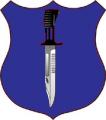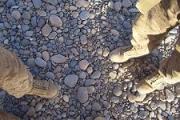William Owen (and anyone else),
Do you have recommendations for further reading on why it failed? Specifically, what effect did the use of 6man squads have on the overall outcome?
Use of 6man teams and 12man "heavy" teams have been used extensively by some Army units during OIF rotations. Some say that this set up is "advanced math" but with good SOPs, detailed mission planning and understanding of C&C it can be made very simple. The system worked well to cover a larger area with fewer resources than traditional platoon sized assets.











Bookmarks